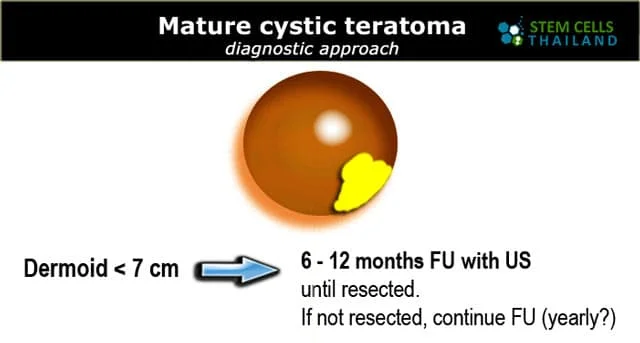
Teratomas are fascinating and somewhat enigmatic tumors that are derived from pluripotent cells. These tumors can contain tissue from all three germ layers (ectoderm, mesoderm, and endoderm), which means they can comprise a diverse array of tissue types, from teeth to hair to glandular tissue. The presence of these varied tissues in a single tumor is what makes teratomas unique.
Teratomas arise from germ cells, which are the cells that give rise to eggs in females and sperm in males. These germ cells are pluripotent, meaning they have the potential to develop into many different cell types.
Sites of Occurrence: While teratomas most commonly occur in the ovaries in females and the testes in males, they can also be found in other locations, such as the sacrococcygeal region (particularly in infants), mediastinum, retroperitoneum, and the brain.
Teratomas have been a topic of interest in the realm of stem cell research. When pluripotent stem cells (like embryonic stem cells or induced pluripotent stem cells) are implanted one risk is the formation of teratomas. This is because these pluripotent cells can differentiate into any cell type, mirroring the diverse tissue composition of teratomas. This potential risk is a significant concern in developing stem cell-based therapies for humans.
Treatment: The treatment for teratomas varies depending on their location, type (mature vs. immature), and whether they are benign or malignant. Surgery is often the primary treatment, especially for ovarian teratomas. Malignant teratomas may require additional treatments like chemotherapy or radiation.
Teratomas are tumors derived from pluripotent germ cells and can comprise a diverse array of tissue types. They can be benign or malignant, and their intriguing nature has implications not only in oncology but also in stem cell research. Teratoma is a benign tumor composed of multiple layers emerging from pluripotent cells that have been injected in mice that are found to possess an impaired immune system.
There have been clinical trials carried out to establish a human embryonic stem cell line through the injection of putative stem cells After which, the resultant teratomas undergo verification to identify if the cells have been derived from all of the three embryonic germ layers.
If you've seen people take ice baths or cold showers and wondered if they're onto… Read More
Immunomodulation stands at the forefront of biomedical research, steering the immune system's ability to fight… Read More
Stem cell research leads the charge in medical innovation, heralding revolutionary advances in regenerative medicine.… Read More
The blood-brain barrier (BBB) is a crucial shield for the brain, regulating the entry of… Read More
While peptide bonds are fundamental to protein structure, their direct relationship with stem cells lies… Read More
When discussing cutting-edge cancer treatments, NK cell therapy stands out due to its unique approach… Read More